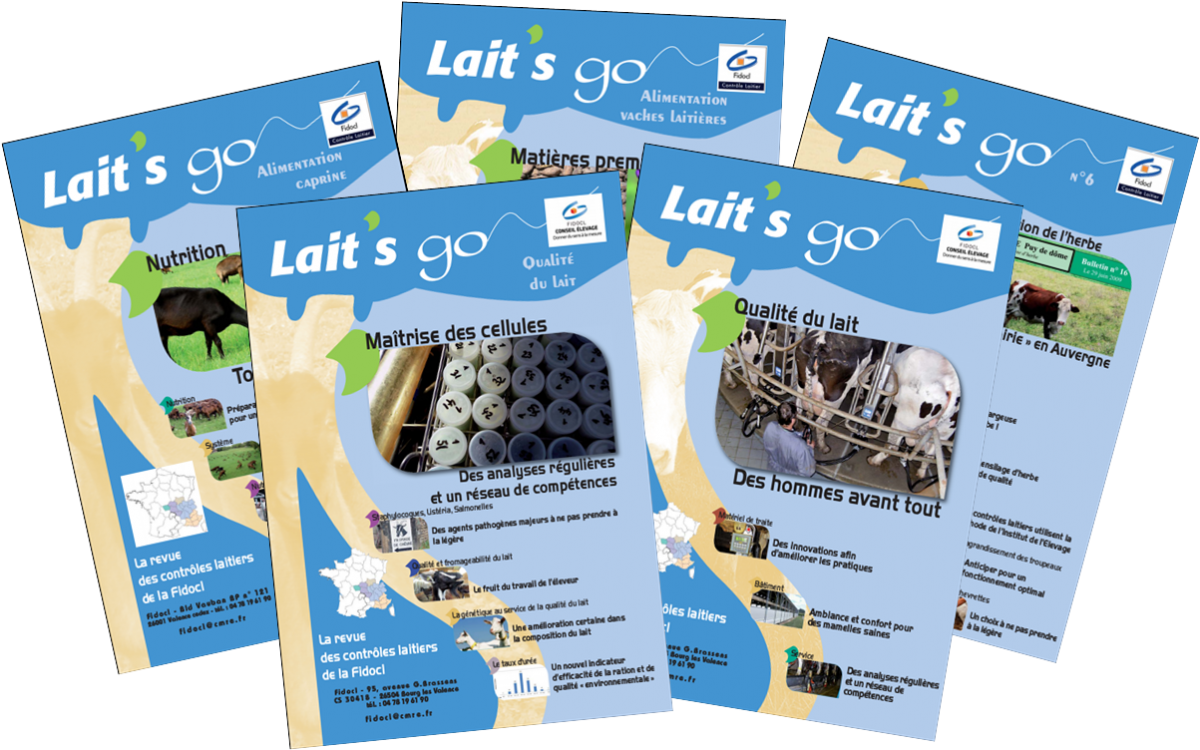Agrégateur de flux
The typical objective of genomic analyses is to assess additive genetic variance in traits. However, the nonadditive component of genetic variation is often disregarded. Consequently, genomic analyses may not directly elucidate the complex genomic structures or other potential underlying mechanisms, such as pleiotropy, dominance, or epistatic effects. Furthermore, polygenic traits are likely to be subject to nonadditive interactions. Specifically regarding traits pertaining to fitness, including fertility, genomic regions exhibiting nonadditive genetic effects, potentially resulting from directional dominance or epistatic effects, have been identified and require further investigation.
Invited review: The impact of wildfires, air pollution, and air quality on the health and production of dairy cattle
The multitude of environmental factors that affect health and production of dairy cows have been documented extensively in the literature. However, the influence of wildfire smoke on dairy production has only been investigated in recent years. Wildfires are becoming a greater source of air pollution across the United States, leading to public health concerns. Given the prevalence of dairy operations residing in fire-prone regions, wildfires may have an under-recognized role in suboptimal dairy production.
Journal of Dairy Science® and JDS Communications® Editorial Board and Ad Hoc Reviewers, 2025
The American Dairy Science Association, the Journal of Dairy Science, and JDS Communications gratefully acknowledge the following individuals who served as members of the editorial boards and as ad hoc reviewers for the journals in 2025.
2025 ADSA Undergraduate Scholarship Recognition Awards
2025 Fellows of the American Dairy Science Association®
The 2025 elected fellows were recognized at the Awards Ceremony of the American Dairy Science Association on June 24, 2025.
2025 Awards Program of the American Dairy Science Association®
The annual Awards Program of the American Dairy Science Association was held on June 24, 2025. Graduate Student Division leaders Miranda Farricker and Mauricio Guerra read the citations. The association greatly appreciates the continued generosity and support of the donors in presenting the annual awards to ADSA® members.
ADSA® Presidential Report
I want to thank the ADSA Board of Directors (https://www.adsa.org/About-ADSA/Leadership), ADSA Executive Director Jerry Bowman, and the ADSA staff for their work in 2024 and 2025. It was a privilege to work with this dedicated group.
INTERPRETIVE SUMMARIES, DECEMBER 2025
Invited review: A systematic review of the effects of pair housing on dairy calf welfare and productivity. By Bučková et al., page 12878. Individual housing of young dairy calves is still prevalent in Europe as well as North America, but the adoption of social housing is gaining traction. In this review, we summarize research findings on the welfare and productivity of pair-housed calves compared with individually housed calves. The advantages of pair housing include better behavioral reactions to stressful husbandry procedures and improved social behavior.
Editorial Board
CONTENTS
Letter to the Editor: Response to Edvardsson Rasmussen et al. (2025)
The list of standard abbreviations for JDS is available at adsa.org/jds-abbreviations-24. Nonstandard abbreviations are available in the Notes.
Letter to the Editor: Associations between days open and dry period length versus milk production, replacement, and fertility in the subsequent lactation in Holstein dairy cows
The recently published retrospective observational study by Overton and Eicker (2025) is well conducted, revealing many associations between previous days open and days dry and their association with replacement risk and milk production in early subsequent lactation. However, the conclusions are unjustifiably bold considering that this is a retrospective observational study where the reason for the delay in days open is unknown and that controlled studies drawing different conclusions do exist.
Some closing words to the Journal of Dairy Science community
“Diligence. I looked it up, in your dictionary. Constant and earnest effort to accomplish what is undertaken. Persistence. Application. But also, toil. And pain.” (Quote courtesy of Definition Delaware LLC, with permission.) These were the words spoken by the character Ada Murray in defending her husband in the movie, The Professor and the Madman. As I reflect on the past 6 yr in service to the Journal of Dairy Science (JDS), there is no doubt in my mind that each monthly issue is a display of the diligent efforts of our authors, reviewers, and editors.
Extending Cow Lifespan in Dutch Dairy Farming: Farm Characteristics, Management Practices, and Behavioral Determinants
This study aimed to identify herd management styles and measures adopted by dairy farmers to extend cow lifespan and to explore the behavioral and farm-specific factors influencing these practices. A mixed-method approach was used, including a survey of 107 dairy farmers, in-depth interviews and farm visits with 10 farmers selected from the survey, of whom 5 had cows with a relatively low average lifespan (less than 4 years and 11 mo on average) and 5 had cows with a relatively high average lifespan (8 years or more on average).
Unveiling the mechanism of Lonicera japonica Thunb. polyphenols against Cronobacter sakazakii from powdered infant formula by untargeted metabolomics and its application as a natural disinfectant
Contamination by Cronobacter sakazakii in powdered infant formula (PIF) and the potential hazards of chemical disinfectants are pressing issues requiring urgent resolution. This study aimed to investigate the antibacterial activity and mechanism of Lonicera japonica Thunb. polyphenols (LP) against C. sakazakii and evaluate the efficacy of LP as a natural disinfectant in inhibiting C. sakazakii in biofilms on the common contact surfaces of PIF. The results showed that the minimum inhibitory concentration and minimum bactericidal concentration of LP against C.
The effect of DHA-rich algae oil supplementation in milk replacer on blood concentration of docosahexaenoic acid metabolites and cytokine production in white blood cells in calves
This study aimed to investigate the effect of dietary supplementation with docosahexaenoic acid-rich algae oil (DHA-RAO) on blood levels of selected docosahexaenoic acid (DHA) metabolites, and to assess its potential influence on cytokine production by white blood cells in neonatal dairy calves. Twenty clinically healthy Holstein male calves (8.1 ± 2 d old and 46.6 ± 4.2 kg, mean ± SD) were allocated into 2 experimental groups of 10 animals each: (1) not supplemented with DHA-RAO in milk replacer (MR; group CON); and (2) supplemented with 7.5 g of DHA-RAO/d in MR (group SUP).
QDA and electronic nose combined with machine learning methods to quickly predict consumer preference of Cheddar cheese
Consumer preference for Cheddar cheese is influenced by its aroma characteristics, with aroma serving as a key sensory attribute determining consumer acceptance. This study innovatively integrates qualitative descriptive analysis (QDA) with electronic nose (e-nose) technology to systematically characterize the flavor profiles of 27 common Cheddar cheeses available in the Chinese market. We evaluated 6 odor attributes of cheese using QDA and rapid capture of volatile flavor compounds by e-nose. Using the obtained QDA and e-nose datasets, 4 machine learning algorithms, namely, logistic regression, Gaussian support vector machine, k-nearest neighbors, and decision tree, were used to classify and predict the preference of Chinese consumers for Cheddar cheese.
Thermo-physiological responses and hutch microclimate of outdoor hutch-housed dairy heifers with or without continuous ventilation during a continental summer
Heat stress compromises the growth, health, and welfare of dairy heifers from an early age. With the rising frequency of summer heat-stress days, innovative and effective mitigation strategies are increasingly needed. This study evaluated the effects of continuous active ventilation on thermo-physiological responses and hutch microclimate in outdoor-housed dairy heifers during a continental summer (June to August, average temperature-humidity index = 71 ± 7.6). Holstein heifers (n = 32) were enrolled at birth and sequentially assigned to passive (PASS; rear window opened ∼20 degrees, and vents opened 50%) or active (ACT; solar-powered fan redirecting airflow via a custom opening in the hutch rear window, and rear vents open at 50%) ventilation.
Goat bone marrow mesenchymal stem cell-angiotensin–converting enzyme 2 attenuates Streptococcus uberis–induced ferroptosis in goat mammary epithelial cells by downregulating the reactive oxygen species-chaperone–mediated autophagy pathway
Streptococcus uberis (S. uberis) is a leading cause of environmental mastitis globally. Ferroptosis, a cell death pathway driven by Fe2+-mediated lipid peroxide accumulation, with reactive oxygen species (ROS) participating in this process, is related to the mechanisms of infections caused by other pathogens inducing mastitis, such as Escherichia coli (E. coli) and Staphylococcus aureus (S. aureus). This study aims to investigate whether ferroptosis occurs in S. uberis–induced mastitis and to develop corresponding therapeutic interventions.
Fortification of chamomile and saffron in dry yogurt production: Effects on its physicochemical and sensory properties
The study aimed to formulate fortified dry yogurt with chamomile and saffron, making a functional, probiotic, and therapeutic food. Fortified dry yogurt was prepared in 7:2:1 ratios of dry yogurt, chamomile, and saffron powders. Flavoring of fortified dry yogurt was done at 7:3 ratios of fortified dry yogurt and each flavor (mint, cumin seeds, fennel seeds, and black pepper powder). The prepared fortified dry yogurt was acidic (pH 3–4) and the total soluble solids were 49.97% of the product concentrate.






